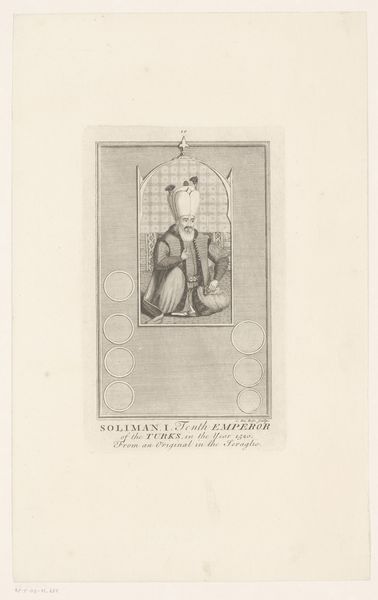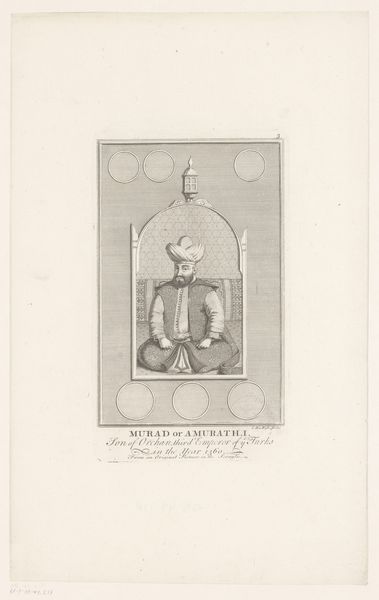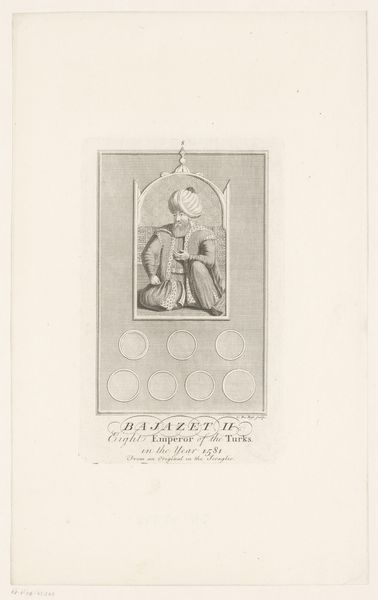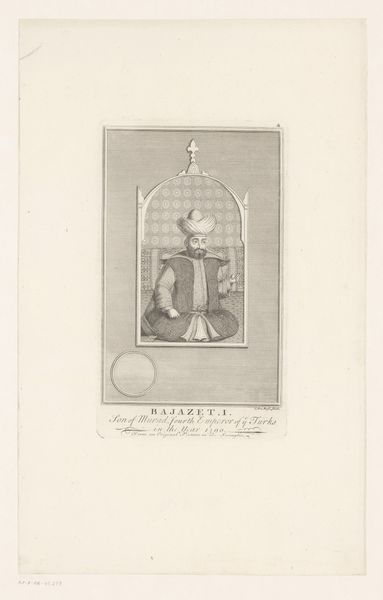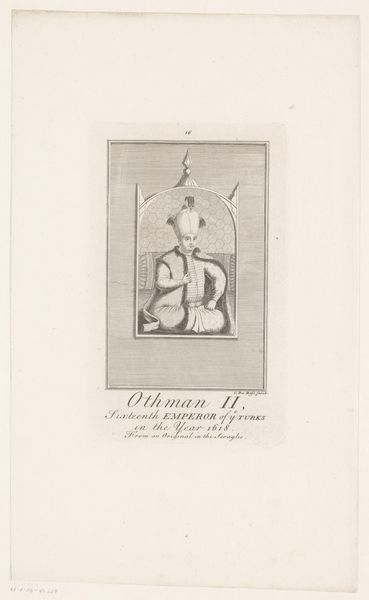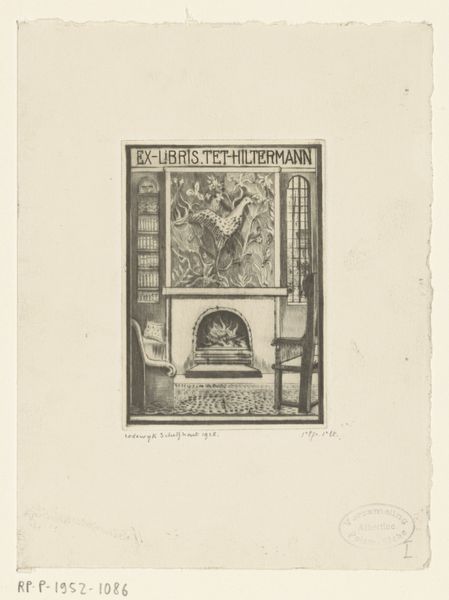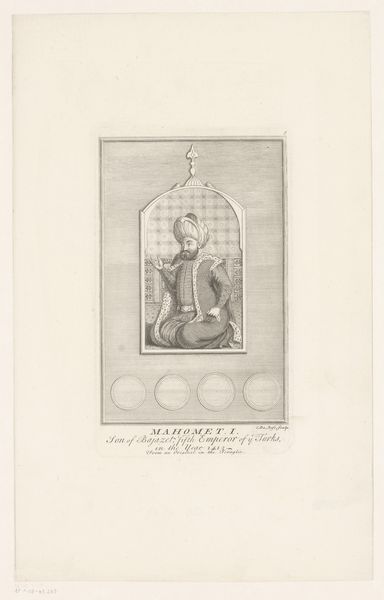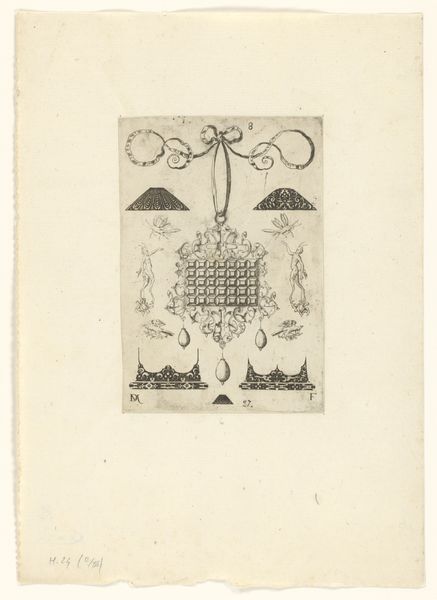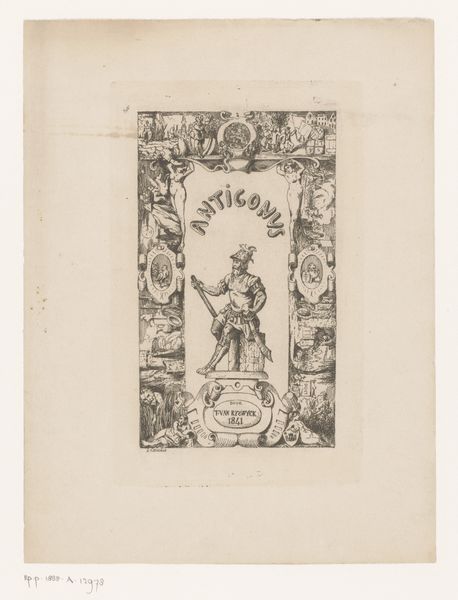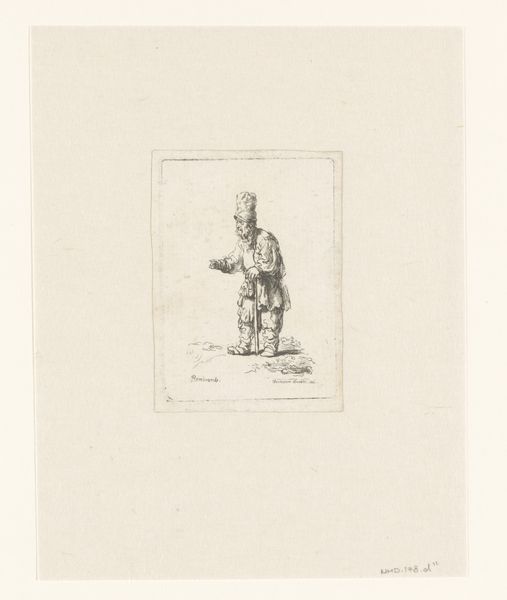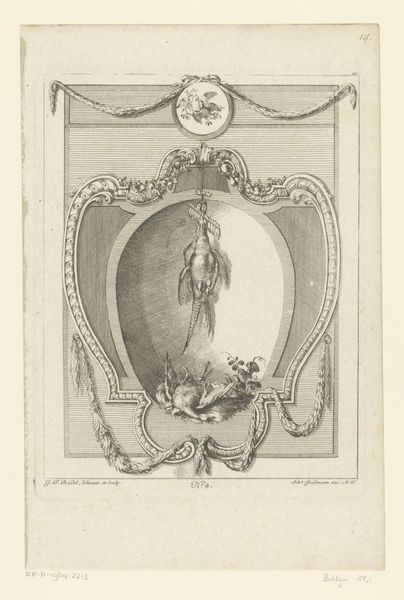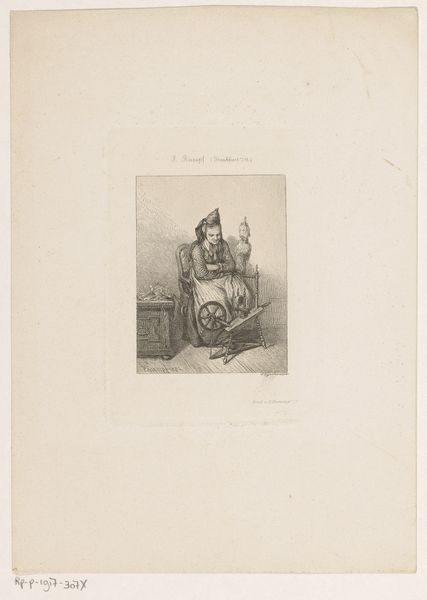
print, engraving
#
portrait
# print
#
line
#
islamic-art
#
history-painting
#
engraving
Dimensions: height 196 mm, width 123 mm
Copyright: Rijks Museum: Open Domain
Curator: So, we’re looking at an engraving dating from 1692 to 1745 by Claude DuBosc. The work is entitled "Portret van Murat III," which translates to Portrait of Murat III. Editor: Ah, my first impression is this has such a sense of serene, yet authoritative power, even in monochrome! The delicate line work against the stark background lends him this ethereal but solid presence. It almost feels like an icon, you know? Curator: It’s interesting you say "iconic," because depictions like this were purposefully constructed to cement power and legacy. Murad III reigned as the Sultan of the Ottoman Empire during a really transformative period in its history. Looking at this, we need to remember how representation shaped perceptions of imperial authority in both the East and West. The print medium allowed for wide dissemination. Editor: Absolutely! He's serving serious Sultan vibes! And the turban—talk about high fashion diplomacy. Jokes aside, it is pretty impressive how a print, with just lines, can convey so much detail. Those repeating circular shapes look intriguing, like bubbles in the background. But why...? Curator: Good question! These designs speak to the blending of traditions, specifically looking to the history and traditions of Islam. He sits framed within what appears to be an arched window, that points back to traditional architecture and design, typical to Islamic art. Editor: I also like how this relatively small artwork can trigger thoughts on power dynamics and history—art truly acts as a time machine, eh? It reminds me we need to read history with a keen awareness of who’s writing it... or, in this case, printing it! Curator: Exactly, and considering the political climates of the period this was created, looking at DuBosc's depiction in relation to other portraits of the Sultan adds critical nuances to our understanding. It's a complex image layered with intercultural and political histories. Editor: I think next time I see this print I’ll think about how appearances can have more impact than people even believe is possible! Curator: I will remember the print's accessibility. Art gives historical narratives another means of distribution, that makes ideas and concepts travel far, throughout different lands, languages and more.
Comments
No comments
Be the first to comment and join the conversation on the ultimate creative platform.
